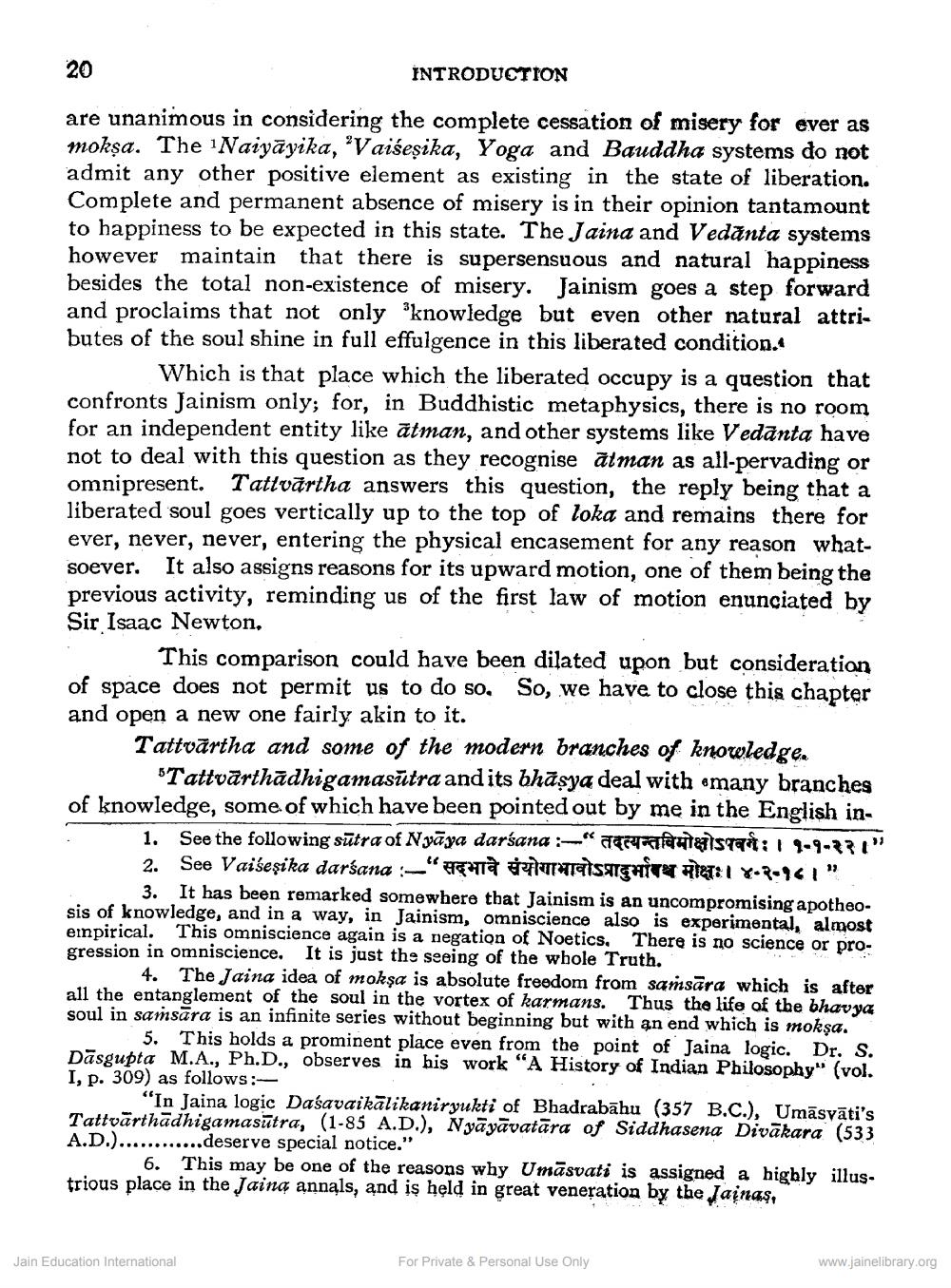________________
20
INTRODUCTION
are unanimous in considering the complete cessation of misery for ever as mokşa. The Naiyāyika, "Vaišeșika, Yoga and Bauddha systems do not admit any other positive element as existing in the state of liberation. Complete and permanent absence of misery is in their opinion tantamount to happiness to be expected in this state. The Jaina and Vedānta systems however maintain that there is supersensuous and natural happiness besides the total non-existence of misery. Jainism goes a step forward and proclaims that not only knowledge but even other natural attributes of the soul shine in full effulgence in this liberated condition.
Which is that place which the liberated occupy is a question that confronts Jainism only; for, in Buddhistic metaphysics, there is no room for an independent entity like ātman, and other systems like Vedānta have not to deal with this question as they recognise ātman as all-pervading or omnipresent. Tattvārtha answers this question, the reply being that a liberated soul goes vertically up to the top of loka and remains there for ever, never, never, entering the physical encasement for any reason whatsoever. It also assigns reasons for its upward motion, one of them being the previous activity, reminding us of the first law of motion enunciated by Sir Isaac Newton,
This comparison could have been dilated upon but consideration of space does not permit us to do so. So, we have to close this chapter and open a new one fairly akin to it.
Tattvārtha and some of the modern branches of knowledge.
5Tattvārthādhigamasutra and its bhāsya deal with many branches of knowledge, some of which have been pointed out by me in the English in
1. See the following sūtra of Nyāya darśana -"agerlaatista: I 9-9-731" 2. See Vaiseșika darśana :-" HO ZITATISATCHIV AIUT: 1 Y-R-701"
3. It has been remarked somewhere that Jainism is an uncompromising apotheosis of knowledge, and in a way, in Jainism, omniscience also is experimental, almost einpirical. This omniscience again is a negation of Noetics. There is no science or progression in omniscience. It is just the seeing of the whole Truth.
4. The Jaina idea of mokşa is absolute freedom from samsāra which is after all the entanglement of the soul in the vortex of karmans. Thus the life of the bhavya soul in samsāra is an infinite series without beginning but with an end which is mokşa.
5. This holds a prominent place even from the point of Jaina logic. Dr. S. Dasgupta M.A., Ph.D., observes in his work "A History of Indian Philosophy" (vol. I, p. 309) as follows:
"In Jaina logic Daśavaikälikaniryukti of Bhadrabāhu (357 B.C.), Umāsvāti's Tattvārthādhigamasūtra, (1-85 A.D.), Nyāyāvatāra of Siddhasena Divākara (533 A.D.)............ deserve special notice."
6. This may be one of the reasons why Umāsvati is assigned a highly illus. trious place in the Jainą annals, and is held in great veneration by the Jainas,
feel freedom from Thus ta which is not pri si
Jain Education International
For Private & Personal Use Only
www.jainelibrary.org




